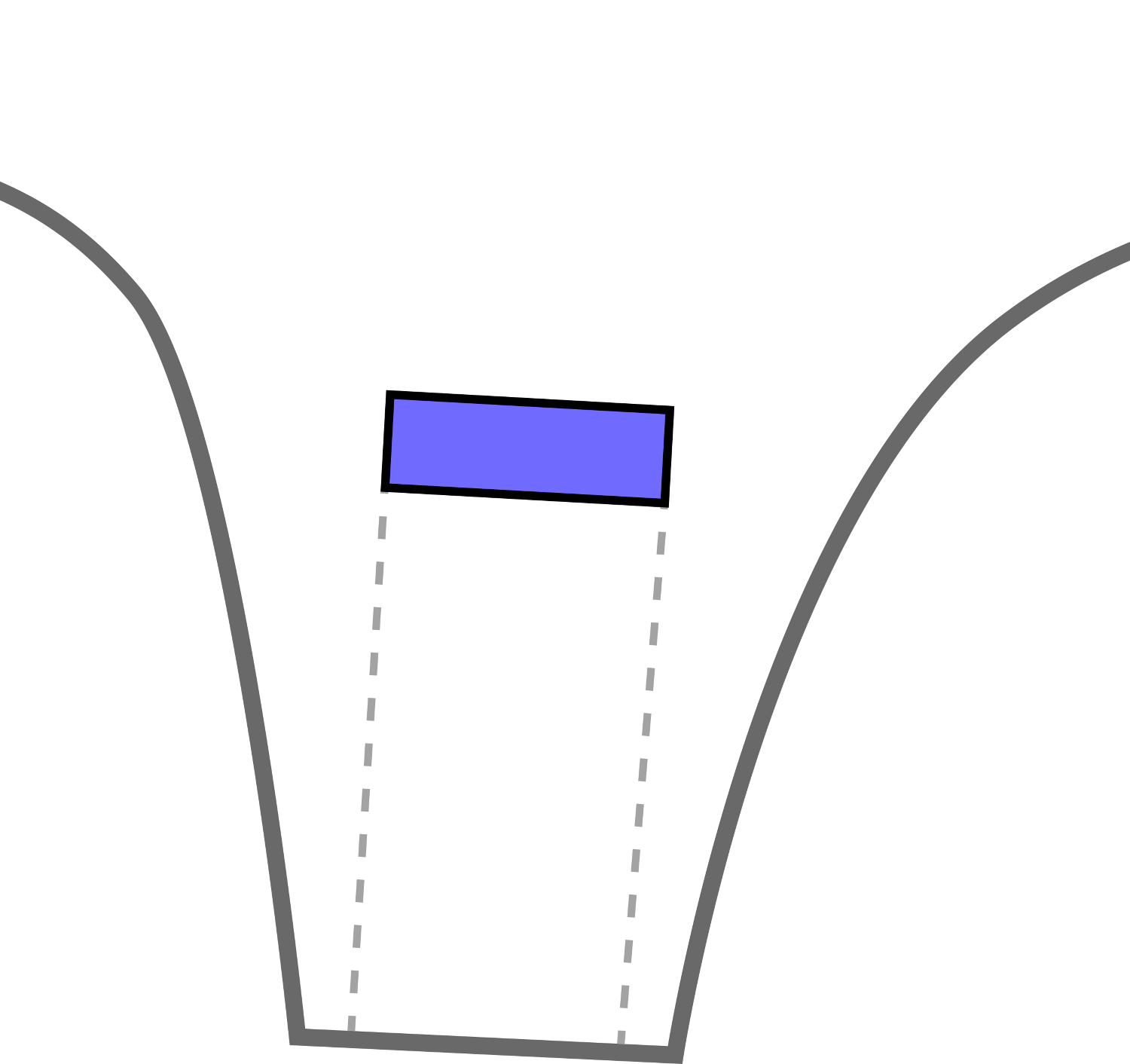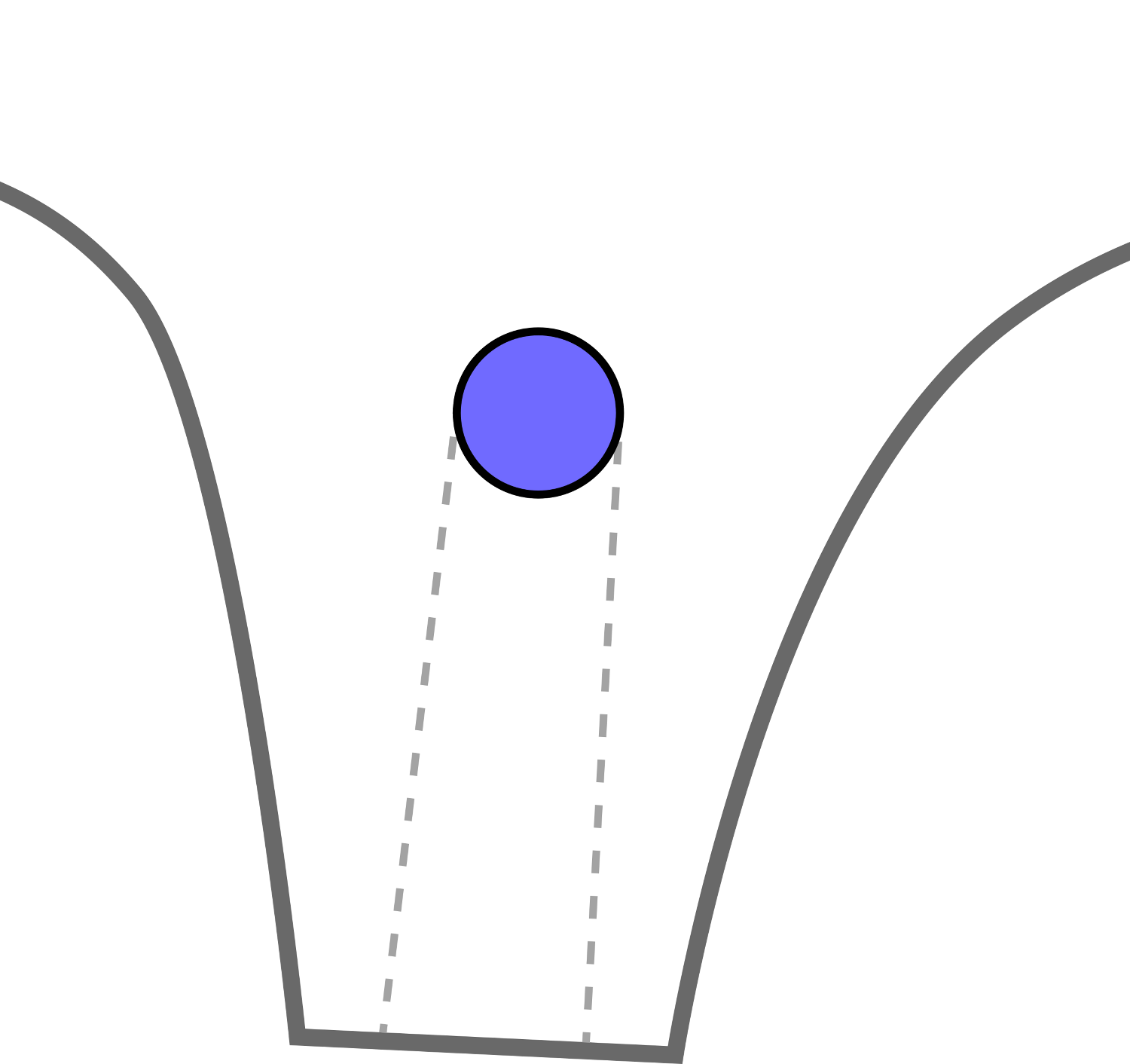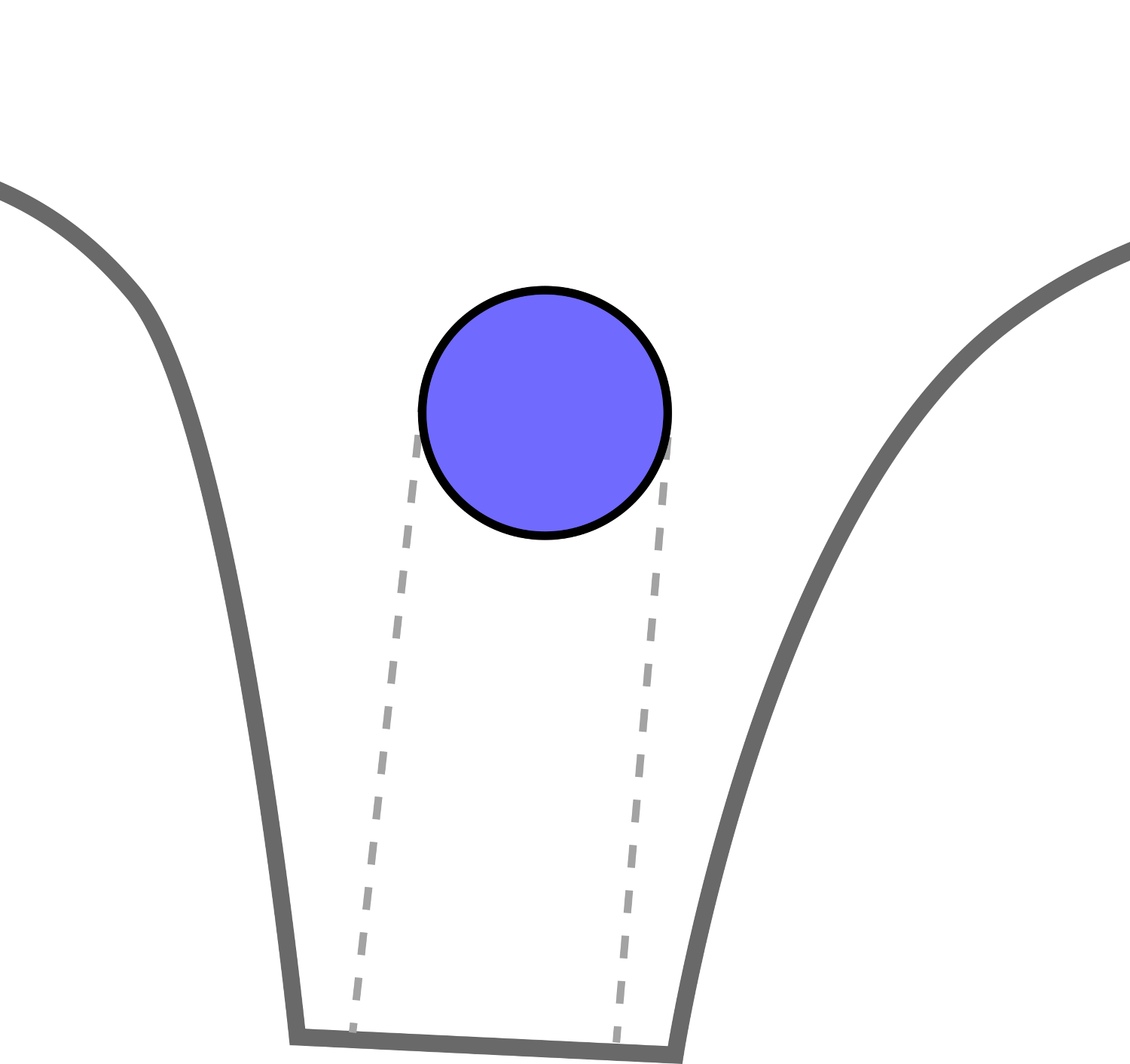Ocarina playing characteristics and timbre
The playing characteristics and timbre of ocarinas can vary a great deal, ranging from loose and airy to deeply textured and buzzy. Playing characteristics like volume dynamics and blowing pressure also vary a lot.
These factors are controlled by the ocarina's design and are set when the instrument is made. Understanding the factors that control them will help you estimate how an ocarina will play and sound.
The timbre (tone colour) of ocarinas
The shape and size of the sound hole are the main aspects that control an ocarina's timbre, and quite a few options are available:
Teardrop
Teardrop sound holes are among the most commonly found as of writing. They have a very pure timbre and are often seen on Asian made ocarinas.

Rectangular
Rectangular sound holes are most commonly seen on pendant ocarinas, and are rare on transverses. They have a strongly textured, 'reedy' timbre.

Round
Round sound holes play somewhere between teardrop and rectangular. They produce a relatively textured timbre, but less so than rectangular. They are mainly found on traditional Italian ocarinas.

Oval
Oval-shaped sound holes produce a somewhat textured timbre, falling somewhere between a round sound hole and a rectangular one. They are common in Asian made ocarinas.

Sound hole proportions
The dimensions of a sound hole, its width vs. its height (aspect ratio), also impact the playing characteristics of an ocarina.
Long narrow sound holes
Longer sound holes require the player to blow harder as higher notes are played. The high notes tend to be louder than the low.

Wide and short sound holes
Wider sound holes with the labium closer to the windway exit play with an almost constant blowing pressure over their range. They sound at balanced volume, and tend to produce a smaller total range.

Sound hole size
The size of the sound hole affects the overall volume of the instrument. If the chamber volume is fixed, varying the size of the sound hole has the following effects:
Small sound holes
Smaller sound holes bring out the characteristic timbre of the sound hole shape (pure or buzzy), and tend to be much louder on the high notes.

Large sound holes
Larger sound holes generally sound more breathy, are usually more balanced in volume, louder overall, and need more air. If no other factors change, enlarging the sound hole will also rise the pitch.

Breath curves and playing characteristics
The choice of sound hole shape, as well as its overall size in relation to the chamber volume and aspect ratio, creates a 'possibility space' wherein an ocarina can sound.
Ocarinas change in their pitch and timbre depending on how hard the instrument is being blown, while maintaining the same fingering. At a low pressure they sound very thin and airy, then sound stronger until eventually the instrument screeches.
Thus, one can imagine starting with an ocarina with no finger holes, progressively making the hole(s) larger, measuring the lowest and highest pressure that the instrument will produce sound. You'd be left with a range something like this:

A maker is free to place the ocarina's breath curve anywhere within this range by adjusting blowing pressure and sizes of the finger holes.
Because ocarinas change pitch depending on how hard they are blown, the maximum possible sounding range would be attained by a curve from the bottom left, to the upper right of the possibility space. That is low pressure on the low notes, high pressure on the high notes.
Tuning an ocarina like this in the real world would not sound good, however. The low notes would be very quiet, contrasted against a much louder and clear mid-range, and airy, finicky high notes.

Twelve hole ocarinas make use of a similar, but less extreme, pressure curve. Typically, they are tuned such that the notes from low C to high F play somewhere in the middle of the possibility space. The lowest notes are tuned with an irregular pressure cut. If graphed, it looks something like this:

This tuning does extend the range, but it also has an effect of altering the ocarina's volume dynamics, leaving the lowest notes considerably quieter than the high notes. The lowest notes of such an instrument often don't sound good.
A different approach that results in a more balanced volume dynamic over the range of the instrument is to slightly enlarge the sound hole and tune the instrument with a flatter pressure curve. Tuning an ocarina like this also reduces the total range to about ten holes.

In general, an ocarina with fewer finger holes will sound more balanced in timbre and volume over its whole range than one with a larger range, as well as have a shallower breath curve. However, this can only be known for sure by playing the ocarina.
It is easy to recognise how your ocarinas are tuned by measuring the breath curve. See recognising badly tuned ocarinas: how to measure the breath curve.
Chamber volume and sounding volume
Ocarinas can be designed to be loud or quiet while sounding at the same pitch. This is achieved by changing the volume of the chamber, blowing pressure and the size of the sound hole:
- Ocarinas that have a larger chamber volume and sound hole play with a higher pressure and are louder.
- Ocarinas with a smaller chamber volume and sound hole play at a lower blowing pressure and are quieter.
You can get a reasonable idea of the pressure required to play an ocarina by looking at the sizes of the finger holes. Larger holes generally indicate an ocarina tuned at a higher pressure, but this isn't foolproof, as hole size also depends on chamber shape and wall thickness.
Note that both of these types can be made with either a steep or shallow breath curve, usually coupled with a longer or shorter/wider sound hole, as they better support those tunings.
Chamber volume and the relative area of the sound hole changes the loudness of the lowest note, while the steepness of the breath curve controls the volume dynamic between the high and low notes.
Closing notes
Ocarinas can be made with a diverse range of playing characteristics and timbres, and understanding the factors discussed in this article will help you to estimate how a given instrument will sound, without needing to play it.
Exactly what you'll want to look for in an instrument depends on what you want to use it for. In summary:
- Ocarinas with larger sound holes and bodies are louder on average, usually with a large difference in volume between the high and low notes.
- Ocarinas with a smaller body and sound hole for the pitch have the opposite characteristic: their volume is more balanced over the range.
- Round or rectangular sound holes generally sound more textured, with a smaller range.
- Teardrop or oval sound holes generally sound more pure and sound over a larger range.
So, if you're looking to play highly complex high tempo music, an ocarina that plays at lower pressure with a flatter breath curve would make this easier.
A louder ocarina can be useful if you are playing outside or in a large room without amplification. However, such instruments also require a larger volume of air to sound, which makes it more challenging to sustain long notes without running out of air.
And, an ocarina with a steep breath curve can be useful if a volume dynamic of loud high notes fits with the way that the music you are playing was written.
Many people go for 'pure' sounding ocarinas as they are the most available, or because it is the most widely known characteristic of the instrument. But I do recommend trying ocarinas with other timbres, as you may find them more appropriate for your music.
The range, sound quality trade-off
It is also important to note that many of the aspects that influence the behaviour of an ocarina are coupled. Things like voicing design and tuning have a direct impact on range, but these same design choices also affect timbre. If you're looking for an ocarina with a balanced volume and highly textured timbre, the total sounding range of the instrument will be reduced.
As of the time of writing, there is a strong drive in the market towards standardising on the 12 hole fingering system. I believe this has arisen from a lack of understanding, and it should now be apparent why this is a problem. In my experience, only designs leaning towards a pure sound, with a small voicing and steep pressure curve can sound cleanly over the full range of a 12 hole.
Ocarinas are quite versatile instruments, but to access most of that flexibility means getting out of the '12 hole box', either being willing to accept less range, or using multichamber ocarinas. Multichambers do not suffer from the same limitations, as each chamber produces a small part of the total range.
